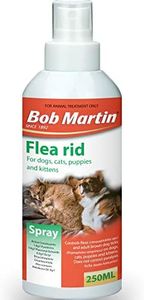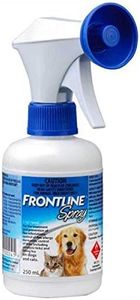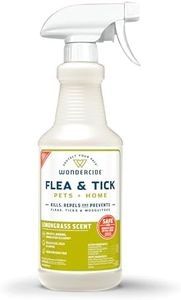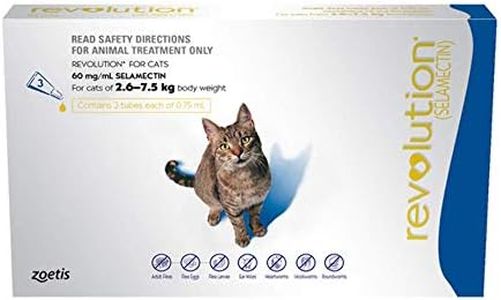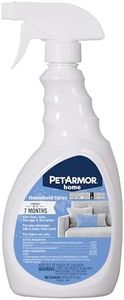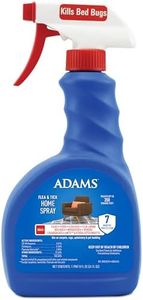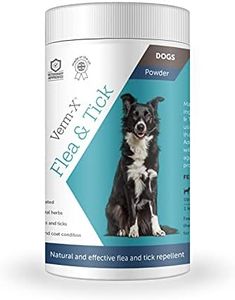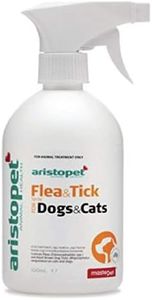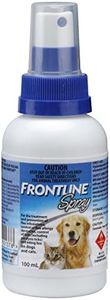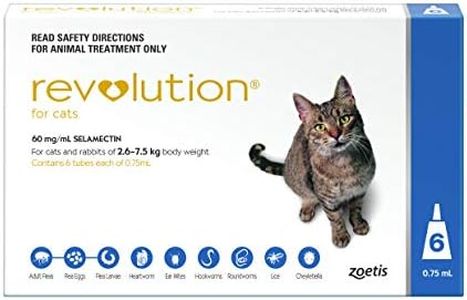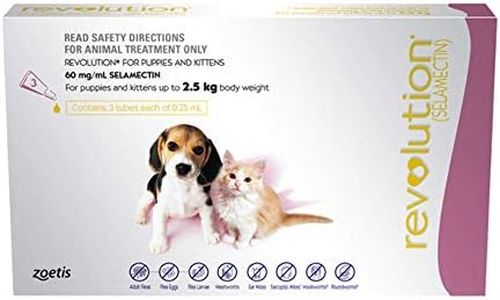We Use CookiesWe use cookies to enhance the security, performance,
functionality and for analytical and promotional activities. By continuing to browse this site you
are agreeing to our privacy policy
10 Best Flea Sprays
From leading brands and best sellers available on the web.Buying Guide for the Best Flea Sprays
Choosing the right flea spray is essential to effectively manage and eliminate fleas from your pets and your home. Before buying, think about where you'll use the spray (on your pet, in your home, or outdoors), the severity of the flea problem, and whether you have any sensitivities to chemicals. Each product will have different strengths and ingredients, so it's important to match the spray to your specific needs for both effectiveness and safety.Type (Pet, Home, or Yard)Flea sprays are generally designed for use on pets, inside the home, or outdoors in the yard. The type determines where the spray is safe and effective to use. Pet sprays are milder and formulated to be safe on animal fur and skin, home sprays are made for carpets, furniture, and floors, while yard sprays are meant for treating grass and outdoor areas. When deciding, consider where your flea problem is most intense. If your pet brings in fleas from outside, you may need all three types, but always use a spray specifically made for the intended area for the best results and safety.
Active IngredientsThe active ingredient is what kills or repels fleas, and it can range from chemical pesticides (like pyrethroids or permethrin) to natural options (such as essential oils). Chemical ingredients tend to be more powerful and long-lasting, but may cause sensitivities in some pets or people. Natural formulas are gentler and preferred if you want to minimize exposure to synthetic chemicals, but may require more frequent application. Choose based on the sensitivities of your household members and the severity of your flea infestation.
Residual Effect DurationThis spec tells you how long the flea spray remains effective after application, which can range from a few days to several weeks. Longer-lasting sprays reduce the need for frequent treatments and are useful for ongoing infestations, while shorter-duration sprays may be enough for minor or occasional issues. If you have recurring flea problems, a longer residual effect might be more convenient and effective; for lighter outbreaks, a shorter-term spray may suffice.
Safety for Pets and HumansIt's crucial to ensure the flea spray is safe for everyone in your household, including children, cats, dogs, and other animals. Some ingredients safe for dogs may be toxic to cats or vice versa, so always check safety instructions. Look for sprays that match your pet types, and consider any allergies or sensitivities among family members. Always follow label instructions for use and avoid products that could be harmful in your specific situation.
Ease of ApplicationFlea sprays come in various delivery methods such as pump sprays, aerosols, or mists. Some require direct spraying onto pets, while others are used for surfaces or rooms. The ease of application is important for regular use—choose a format that you find simple to apply and fits your target area. If you have multiple pets, wide-coverage sprays may be faster, while spot-treat sprays are useful for targeted treatment. Consider what you’ll feel comfortable using consistently.
Odor and Staining PotentialSome flea sprays have strong scents or may leave residues that can stain fabrics or furnishings. Unscented or mildly scented sprays are better for sensitive individuals or use on fabrics. If you’re treating your home, check for a product that won’t stain or leave a lingering odor. If scent isn’t a concern, then a more potent formula may be acceptable if it offers better performance.
